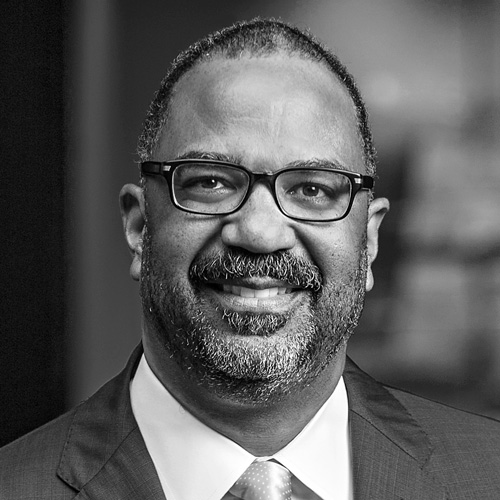At a recent internal presentation at NTN Americas’ headquarters in Mount Prospect, Illinois, chief executive officer Tetsuya Sogo stood at a whiteboard before a crowded room of attentive managerial personnel. With a black marker he drew a large iceberg buffeted by squiggly waves, the craggy tip of the berg jutting above the water and the bulk of its swollen mass extending deep below the surface.
The iceberg, he explained, represented knowledge: the tip was “explicit knowledge,” derived from data, analysis, and headfirst thinking, and the hidden bulk was “tacit knowledge,” gleaned from long-term first-hand experience and gut-level instincts. Americans, he went on, are good at processing explicit knowledge, and the Japanese have developed effective systems for processing tacit knowledge.
Sogo wants to combine these strengths to turn bearing manufacturer NTN Americas into a “learning organization” in which everyone—from upper-level managers to those on the factory floor—can see its market goals, its managerial initiatives, and its production capabilities, like the iceberg, as a cohesive whole.
Sogo is uniquely qualified to speak on the differences between the business cultures of Japan and America. Originally from Japan, he got his start with Osaka-based NTN Corporation more than thirty years ago, just after graduating from Waseda University with a bachelor’s degree in industrial engineering in 1982. Like many Japanese workers, he went through a rotational program and gained experience in several positions to understand different aspects of the manufacturing process, and eventually this landed him a post in 1989 as chief engineer of the company’s plant in Elgin, Illinois, producing wheel bearings.
Read more of Profile’s Top 50 articles.
The facility had the most modern equipment, but its production numbers didn’t match those of factories in Japan, and Sogo saw for the first time how Japanese and American managerial styles can clash. The former rewards workers for their loyalty and for a focus on teamwork and incremental perfection through business philosophies such as kaizen, which translates as “continuous improvement.”
This approach didn’t work in the higher-turnover economy of the United States, though, so Sogo had a discussion with his workforce and created a new wage system based on skill level and demonstrated performance. Immediately, employees became more enthusiastic about training with kaizen spirit, and the Elgin factory’s production numbers climbed.
Sogo was deeply impressed by the power of his workforce’s learning-organization thinking and realized that, to globalize it, “the key is how to get local people—local operators, management, executives—to get the maximum power from them.”
Inspired, he decided to continue his studies at the Kellogg School of Management at Northwestern University to expand his understanding of American business processes. He graduated with an executive MBA in 1996 and went back to Japan to conduct strategic-alliance and M&A work for the company. Eventually, he returned to America in 2011 as executive vice president of NTN USA, the holding company for all NTN group companies in the United States, and ultimately he became president of NTN USA and chief executive officer of NTN Americas in 2013 to lead the profitable expansion of NTN’s business in North and South America.
His parent company is now the third-largest bearing manufacturer in the world, and that’s saying something. Bearings are essential for reducing friction in all things mechanical, and the industry that manufactures the small spheres and related components has its hands in everything from aerospace technology to highly automated industrial equipment to the cars we drive.
NTN Corporation’s total net sales revenue was ¥702 billion in 2014, and the Americas region accounted for more than a quarter of that, with most of its revenue coming from the automotive original equipment manufacturer (OEM) market. NTN Americas wants to grab more of the automotive aftermarket (parts sold through retailers and dealerships) as well as greater segments of the industrial OEM market and aftermarket.
“I admire the approach Tetsuya Sogo is taking in integrating the cultural diversity of his organization. Too often people think ‘culture blindness’ is the most enlightened state of cultural sensitivity. But Tetsuya Sogo is using cultural awareness to leverage strength from both the Japanese style of processing knowledge and the American style, to build a collectively stronger and more enlightened organization.” —Guest Editor Ed Wise
And Sogo has the plan to achieve this: “By utilizing the same motivational principles as I have previously,” he says. “I want to inspire the NTN Americas’s management team by growing their minds and spirit.”
Most Japanese leaders are lifelong members of a single company, and this loyalty is valued, according to Sogo. Many Japanese college students will actually join the same company together and stay in touch over the years, even as they take on different roles at a company’s different levels and locations. They will often communicate or go out after work, and the knowledge they share with one another over time will give them a better overall understanding of their organization and its inner workings. This close relationship between middle managers is the basis of the middle-up-down management approach that Sogo is implementing across NTN Americas.
The typical American managerial style, by contrast, rewards sharp decision making based on available information. According to Sogo, it’s a traditional top-down approach that sometimes entails less interaction between a company’s different levels, where strategic matters in key areas get sorted out quickly and decisively when an initiative is handed down.
Good strategic positioning is what will help NTN Americas expand further into the profitable industrial OEM market and the automotive and industrial aftermarkets, Sogo says. But, rather than simply embrace top-down management to get this positioning done, he wants to merge it with Japan’s middle-up-down management style. One of the ways to achieve this is by establishing the tools to support a learning organization.
In addition to conducting town-hall meetings at each NTN facility in the Americas region, Sogo is bringing the executives and middle managers of each facility together for corporate meetings and occasional training seminars. This is fostering interaction between the managers—and between their various departments and different facilities—at all levels and pushing them to learn from each other’s slightly different approaches.
“The important thing is to get together and get to know each other, have drinks together,” Sogo says. “That is how I’m trying to achieve that middle-up-down management.”
Ultimately, Sogo believes that melding the Japanese and American management styles and putting people in the position to learn and use both styles effectively will be the recipe for greater success. “The Japanese middle-up-down management style will help NTN continuously improve and maintain our competitive advantage in the areas of quality, cost, and engineering superiority, specifically in the OEM market,” he says. “The American top-down management style will serve NTN very effectively at helping us make quick decisions and react effectively to the faster-paced industrial and automotive aftermarkets.”
Off the Clock with Tetsuya Sogo
You wouldn’t think it while discussing quarterly finance reports with Tetsuya Sogo over coffee, but the chief executive officer of NTN Americas used to be a minor celebrity in the world of karate. He started training at age ten and enjoyed the practice’s focus on repetition and steady improvement. By the end of college, he had become a third-rank black belt. You can still find YouTube videos of him online, breaking boards and performing moves in sync with others.
These days, Sogo is too busy to practice more than a few karate moves for exercise. When it’s 9 a.m. in Japan, it’s 7 p.m. in Illinois, so Sogo often stays late to make himself available for morning briefings with his parent company. However, he still finds time to get out of the office to see his daughters, the youngest of whom is still in high school and a competitive badminton player.
















